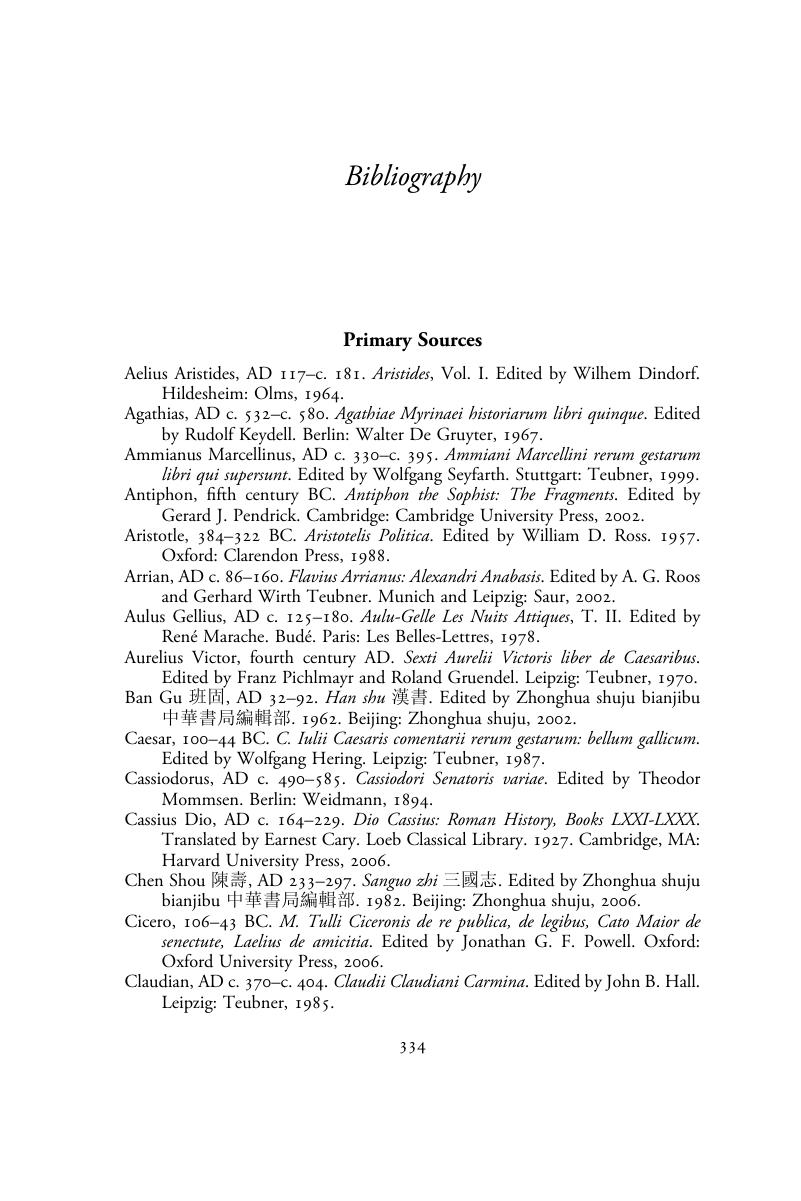Book contents
- Rome, China, and the Barbarians
- Rome, China, and the Barbarians
- Copyright page
- Dedication
- Contents
- Maps
- Maps
- Acknowledgments
- A Note to the Reader
- Introduction
- Chapter 1 Ethnography in the Classical Age
- Chapter 2 The Barbarian and Barbarian Antitheses
- Chapter 3 Ethnography in a Post-Classical Age
- Chapter 4 New Emperors and Ethnographic Clothes
- Chapter 5 The Confluence of Ethnographic Discourse and Political Legitimacy
- Conclusion
- Bibliography
- Index
- References
Bibliography
Published online by Cambridge University Press: 16 April 2020
- Rome, China, and the Barbarians
- Rome, China, and the Barbarians
- Copyright page
- Dedication
- Contents
- Maps
- Maps
- Acknowledgments
- A Note to the Reader
- Introduction
- Chapter 1 Ethnography in the Classical Age
- Chapter 2 The Barbarian and Barbarian Antitheses
- Chapter 3 Ethnography in a Post-Classical Age
- Chapter 4 New Emperors and Ethnographic Clothes
- Chapter 5 The Confluence of Ethnographic Discourse and Political Legitimacy
- Conclusion
- Bibliography
- Index
- References
Summary

- Type
- Chapter
- Information
- Rome, China, and the BarbariansEthnographic Traditions and the Transformation of Empires, pp. 334 - 358Publisher: Cambridge University PressPrint publication year: 2020



